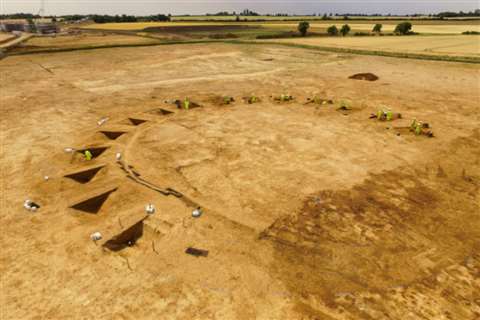History uncovered by road project
04 April 2018

Archaeologists have discovered a wealth of ancient sites along the 34km route of the £1.5 billion (€1.72 billion) A14 upgrade project between Cambridge and Huntingdon in the UK.
With 350ha having been excavated – an area that is about half the size of Gibraltar – it was said to be one of the biggest and most complex archaeological projects ever undertaken in the UK.
Highways England – the government-owned company responsible for the project – is required by law to agree plans for how a scheme will deal with the effects it will have on its immediate environment, including any archaeological finds that may be discovered ahead of starting work.
Dr Steve Sherlock, archaeology lead for the project, said, “In the context of a project like the A14 Cambridge to Huntingdon improvements, that means undertaking archaeological excavations to ensure we record any significant remains that lie along the 21-mile route. The archive of finds, samples and original records will be stored so that the data and knowledge is preserved for this and future generations.”
About 250 archaeologists, led by archaeology experts MOLA Headland Infrastructure, have dug more than 40 excavation areas and, with most of the archaeological programme now completed, have peeled back layers that reveal more than 6,000 years of occupation. Finds date from the Neolithic, Bronze and Iron Ages, as well as Roman, Anglo-Saxon and Medieval periods.
Among them are a Roman trade distribution centre, an abandoned medieval village and three prehistoric monuments.
Elsewhere in the UK, on the A1, work on another road upgrade recently uncovered new evidence to suggest that the Romans occupied the north of England earlier than previously thought.


